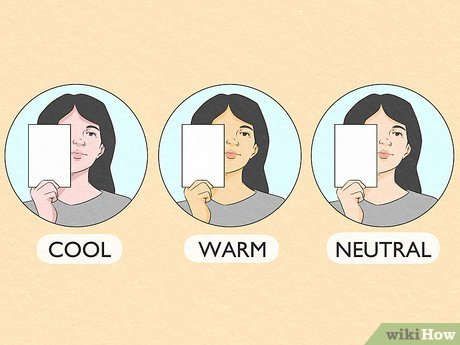Personal Color Analysis: Finding Your Perfect Colors & Why It Matters
- Qui Joacin
- Mar 14
- 4 min read
According to BBC, Ever wondered why some colors make you glow while others wash you out? Or why that one red dress makes you feel unstoppable? Personal color analysis is the answer, and it’s taking over social media—again.
Back in the ’80s and ’90s, getting your “colors done” was all the rage. People would visit consultants who placed them into one of four seasonal palettes—Spring, Summer, Autumn, or Winter—based on their skin tone and undertones. Now, thanks to TikTok and Instagram, the trend is back in a big way.
Experts like Carol Brailey, a professional color analyst, say it’s more than just a fashion statement—it’s a confidence boost. She’s seen clients cry with happiness after realizing how much their perfect colors enhance their appearance. “I have witnessed people’s lives change,” she says, as newfound confidence has even led to career shifts and personal transformations.

How Color Analysis Works
So, how does it actually work? Color analysts look at things like your skin undertones, eye color, and natural hair color to determine whether you suit warm or cool shades. It’s not just about looking good—it’s about finding colors that make you feel amazing.
For example, Tabitha Lofts, a nutritionist and content creator, thought she was warm-toned but discovered she was actually cool-toned. The result? A total makeover! She ditched certain shades, embraced cobalt blue, and even changed her hair color. "I used to think my pale skin made me look icy, but now I see it in a totally different light," she shares.
Does Color Really Matter?
Some people swear by their color palette, while others take a more relaxed approach. Even Lofts, after her color consultation, still wears black because it’s “easy.” Stylist Micah Lumsden agrees that while color can enhance your appearance, it shouldn’t be limiting. “It’s a tool, not a rule,” she says.
Micah, who started her own styling consultancy Cocoa Styling, has seen an increase in male clients wanting to learn their best colors. She suggests a DIY color test—hold different fabrics up to your face in natural light, take selfies, and compare how different shades make you look and feel.
The Psychology of Color
Beyond just aesthetics, color influences mood, behavior, and perception. Stylist Ellie Richards explains that wearing the right colors can impact how others see you and how you see yourself.
She points to pop culture as proof—characters in shows like Euphoria use color to reflect personality. Light blue = innocence (think Cassie), while dark maroons and purples = power and confidence (like Maddy).
Fashion trends are shifting, too. Instead of neutral minimalism, bold shades like cardinal red, marigold yellow, and dusty pink are dominating. “We’re stepping away from the pandemic-era greys and embracing more fun, expressive colors,” says Richards.
Is Personal Color Analysis Worth It?
Whether you go all in or just experiment, color analysis can be a fun and empowering way to express yourself. Even if you don’t stick to your assigned palette, discovering which shades make you feel your best can be a game-changer.
So, are you ready to find your perfect colors? Grab a mirror, some fabric swatches, and start experimenting! Who knows—it might just change the way you see yourself.
You can easily do a personal color analysis at home with a few simple steps! Here’s how to find the colors that suit you best:
Step 1: Determine Your Skin Undertone
Your undertone is the key to figuring out whether warm or cool colors look best on you.
The Vein Test
Look at the veins on your wrist in natural light.
Blue or purple veins? → You likely have cool undertones.
Greenish veins? → You probably have warm undertones.
A mix of both? → You may have a neutral undertone (meaning you can wear both warm and cool tones).
The Jewelry Test
Hold silver and gold jewelry up to your skin:
Silver looks better? → You have cool undertones.
Gold looks better? → You have warm undertones.
Both look good? → You may be neutral.
The White vs. Cream Test
Hold a pure white shirt and a creamy off-white shirt up to your face.
If pure white makes your skin glow → You’re cool-toned.
If off-white flatters you more → You’re warm-toned.
Step 2: Find Your Best Colors
Now that you know your undertone, you can figure out which color palette suits you.
Cool-Toned? You’re likely a Summer or Winter.
Summer: Soft, muted shades like pastel pinks, baby blues, and dusty rose.
Winter: Bold jewel tones like royal blue, emerald green, and deep burgundy.
Warm-Toned? You’re likely a Spring or Autumn.
Spring: Bright and warm colors like coral, peach, turquoise, and golden yellow.
Autumn: Earthy, rich tones like mustard, olive green, rust, and deep brown.
Neutral-Toned? Lucky you!
You can wear both warm and cool shades, but softer, muted tones often suit you best.
Step 3: Do the Fabric Test
Grab different colored clothes or fabric (or even colorful pillowcases or scarves).
Stand in natural light and hold them up to your face.
Take selfies wearing different colors—compare and see which ones make your skin glow vs. which ones wash you out.
Step 4: Play with Makeup & Hair Color
If you’re cool-toned, pink-based foundations and blue-based lipsticks (like berry or fuchsia) will look best.
If you’re warm-toned, opt for yellow-based foundations and warm lipsticks (like peach or brick red).
Thinking of dyeing your hair? Cool blondes, ashy browns, and jet blacks suit cool tones, while warm blondes, golden browns, and auburns look best on warm tones.
Step 5: Trust Your Gut!
Color analysis is a tool, not a rule—if you love a color outside your “recommended” palette, wear it with confidence!
Want a quick test? Try taking a selfie in black and white—if your skin pops more in lighter shades, you might be cool-toned. If it looks better in darker shades, you may be warm-toned!
.png)
Comentários